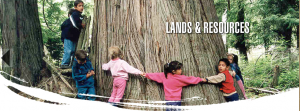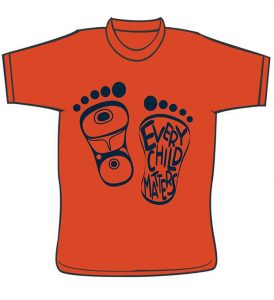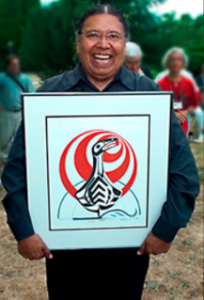I am still working towards selecting a particular area of interest for my research but two seem likely. The first is based on my recent experience teaching in an alternative learning center. I work with at-risk youth and a disproportionately large number of our students (45%, far greater than the % of students throughout the district) are identified by the school district as having Aboriginal ancestry. We spend a lot of our time making social and emotional connections with the students and follow many of Dr. Martin Brokenleg’s Circle of Courage teachings. These teachings apply to all at-risk youth as many of them, Aboriginal or otherwise, feel a great disconnect with the community around them and this has, in many ways, contributed to their educational and life struggles. The second possible theme of interest to me is based on 16 years experience teaching science and math based on curriculum that very much views aboriginal content as an add-on (something that became very obvious to me while marking the solar system module in a grade 8 science workbook last week). While the new BC Curriculum offers hope for improvement by allowing a more constructivist approach to teaching and learning teachers still need to reflect upon and embrace change if it is to be successful.
Journal Article: Native Wisdom on Belonging by Dr. Martin Brokenleg
- This link will take you to a PDF file that outlines the key developmental needs of children as presented in the Circle of Courage: Mastery, Belonging, Generosity and Independence. These needs are compared to the value system set up by Western cultures and the importance of each is outlined. This is a great starting point for those interested in adhering to the philosophy “it takes a village to raise a child” and developing this culture in their classroom. A beautiful poster and summary can also be found by clicking the link.
Website: Martin Brokenleg
- This website contains information about cultural healing and resilience. It is a great place to start for those looking for an understanding of the issues faced by Aboriginal populations and the role that educators can play in helping to overcome some of these issues. The website has links to articles, power points from presentation, and Dr. Brokenleg’s summarised thoughts on different topics of interest.
Journal Article: Integrating Western and Aboriginal Sciences: Cross-Cultural Science Teaching by Glen Aikenhead
- This article discusses the power differential that exists for Aboriginal students in a science classroom. Practical research that offers an alternative approach that moves away from “enculturation” is introduced and a new way of teaching science is presented. In this new approach teachers “play the role of a tour-guide culture broker” making clear to students the language that they are speaking (western science or Aboriginal science) so that students can move between the two languages without one being seen as superior to the other.
Website: Institute for Integrated Science and Health
- This website out of Cape Breton University helps us to “view science in a broadened and culturally inclusive way”, and is guided by the principle of Two-eyed seeing. The website has a vast array of resources to support a changing view of science education that have to be seen and explored to be believed.
Blog: Aboriginal Mathematics K-12 Network
- This is a great website/blog out of UBC for anyone who is hoping to introduce Aboriginal ways of knowing into the Math curriculum. There is information on symposiums, ideas and lessons, and resources to support teachers. Though the primary contributor seems to be Cynthia Nichol, this webpage offers hope to those of us who need some guidance with authentic ways to incorporate Aboriginal ways of knowing into the math curriculum. It offers an amazing platform for knowledgeable individuals to share ideas and resources to support educators.




